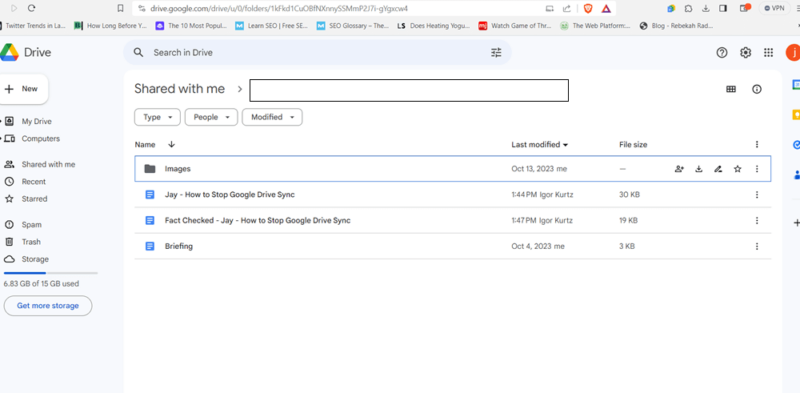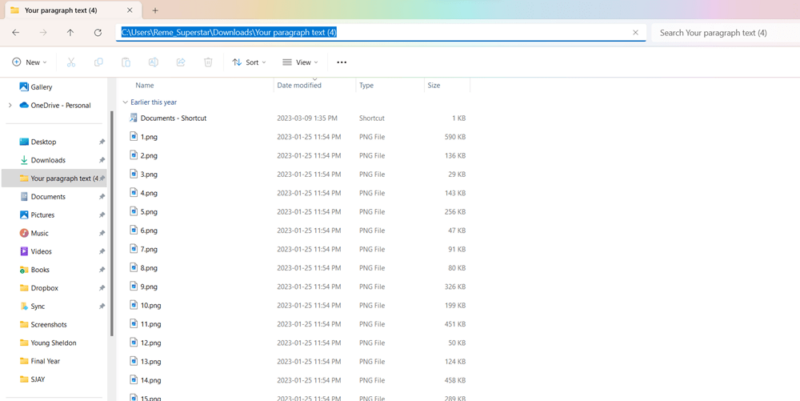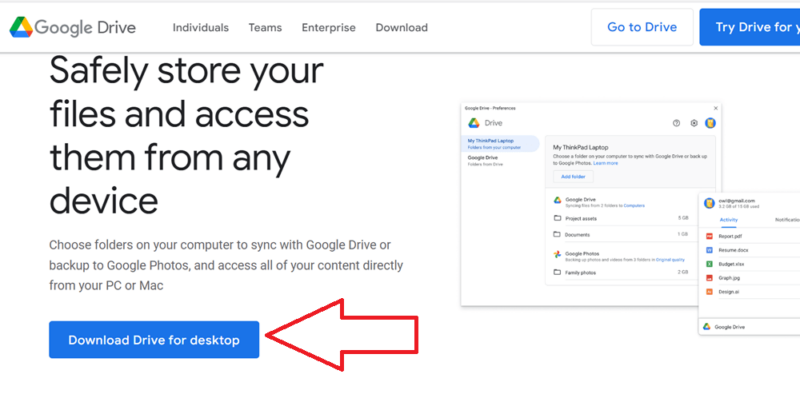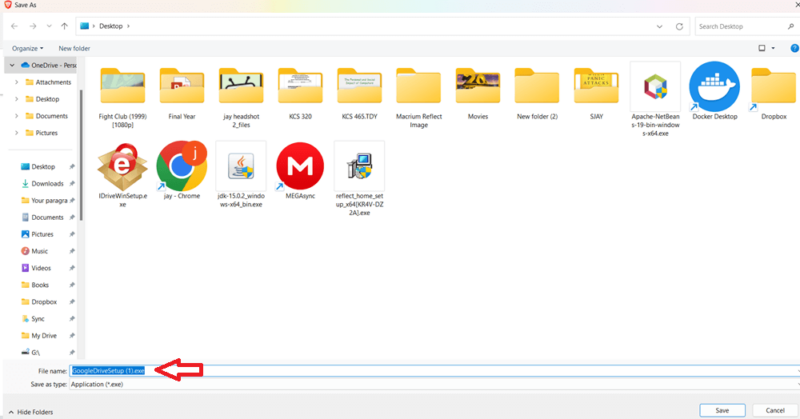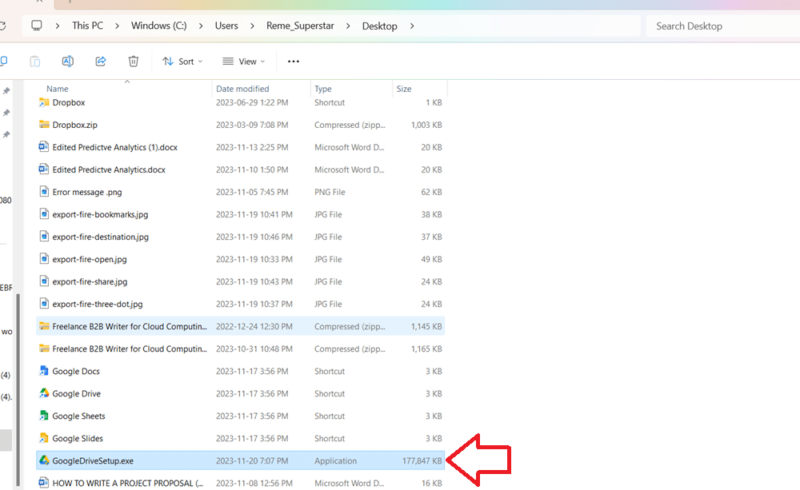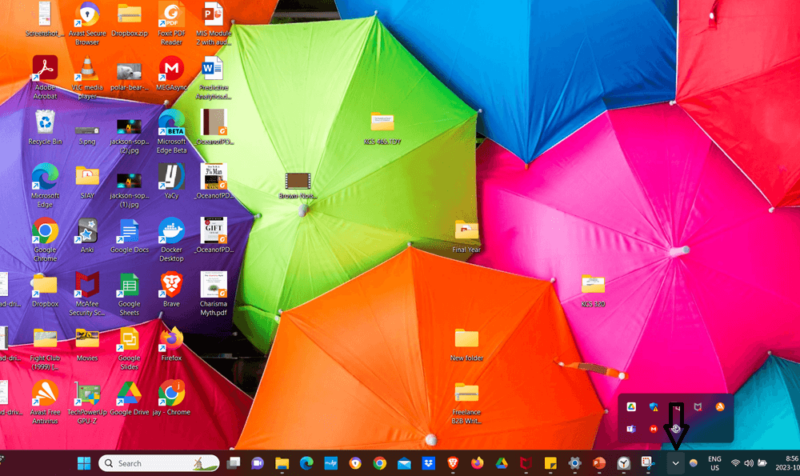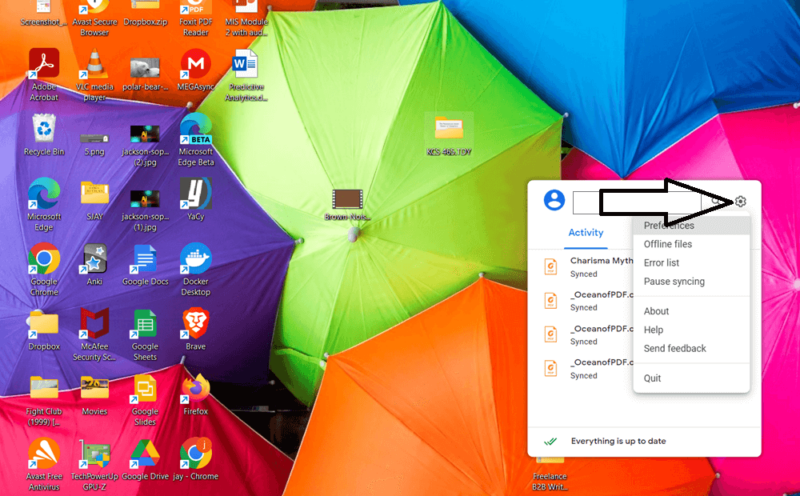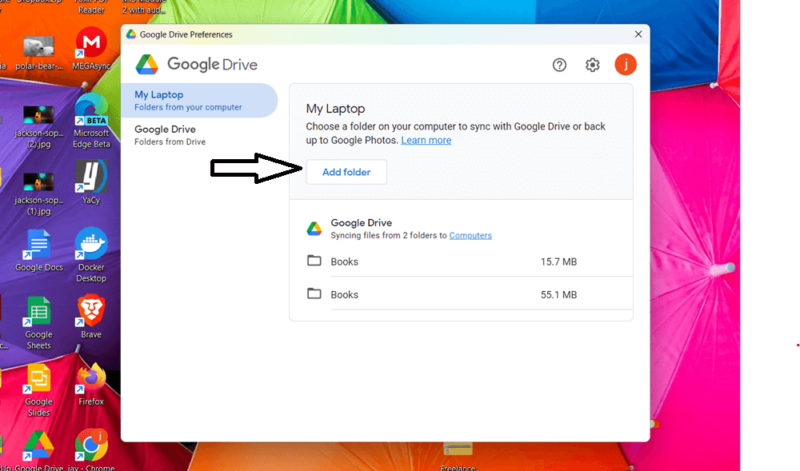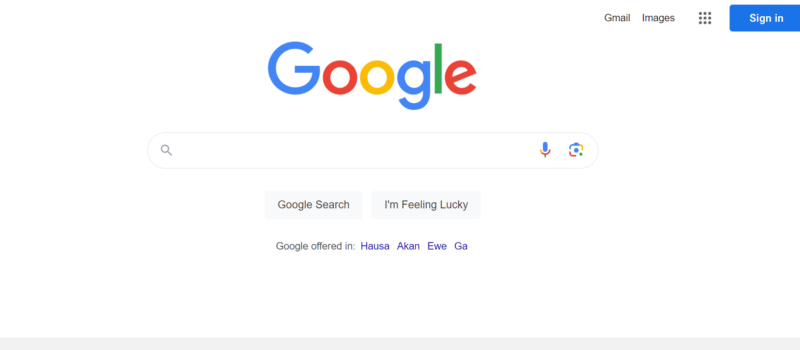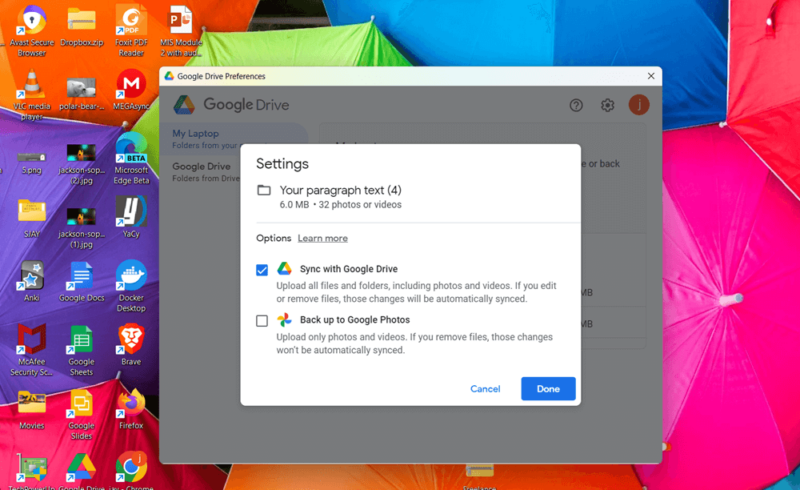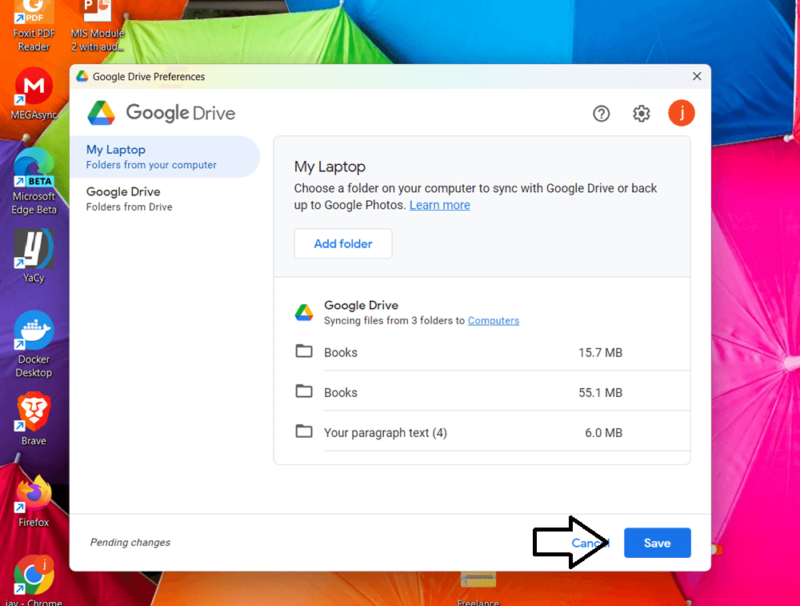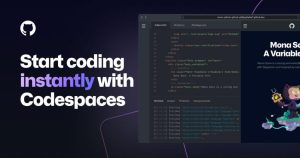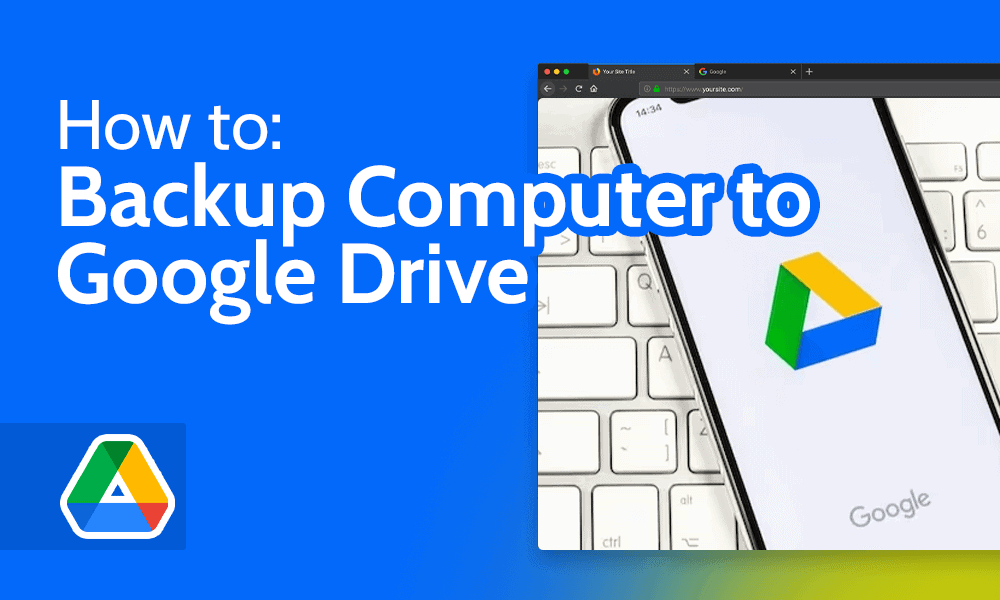
3 Easy Ways to Backup Your Computer to Google Drive Search
Cloudwards.net may earn a small commission from some purchases made through our site. However, any earnings do not affect how we review services. Learn more about our editorial integrity and research process.
Why you can trust us
- 407 Cloud Software Products and Services Tested
- 3056 Annual Software Speed Tests
- 2400 plus Hours Usability Testing
Our team of experts thoroughly test each service, evaluating it for features, usability, security, value for money and more. Learn more about how we conduct our testing.
Key Takeaways: How to Back Up Your Computer to Google Drive
- Google Drive is a great alternative to online backup services if you want to backup a few key files on your computer.
- There are two ways to back up computer files to your Google Drive folder. One way is to drag and drop the files to a Google Drive window. The major drawback with this method is that it creates a copy of each file you back up, taking up twice the storage space.
- The more reliable method is to configure the Google Drive for desktop app to sync your existing folders to the cloud. Doing this will ensure that any changes you make to the folders will reflect in Drive.
- Google Drive storage is not designed for full disk backups, but it can store a backup image from another service. You’ll probably need a paid upgrade to get enough storage space.
Google Drive often tops lists of the best cloud storage services to back up your computer files. It offers 15GB of free storage to any user with a Google account. This makes it a convenient platform to back up files you can’t afford to lose. In this guide, we’ll show you the easiest ways to back up your computer to Google Drive.
While Google Drive is not designed for full hard drive backups — that’s the function of online backup services — the Google Drive for desktop app makes it easy to back up individual files and folders. You can either drag and drop the files to Google Drive or automatically sync your preferred folders. Read our guide to find out how to do this.
One of Google Drive’s best qualities is its integration with Google Workspace, a collection of productivity and collaboration tools that includes Google Docs, Meet, Chat and more. If you want to learn more about Google Workspace, read our “What is Google Workspace” guide. For a comprehensive breakdown of how Google Drive works, read our Google Drive review.
-
02/07/2022
Google replaced the Backup and Sync app with Google Drive for Desktop. The guide has been updated to reflect that change.
-
12/14/2023 Facts checked
This article has been rewritten to include new information about backing up data to Google Drive and new images.
- updates
Backing Up Your Computer to Google Drive Manually: The Drag-and-Drop Method
This is a straightforward way to backup data to your Google Drive account, but it can pose some problems for the user. Dragging and dropping files to Drive disrupts your folder structure, making it easy to forget to copy some files or folders. This method also creates a duplicate file, consuming twice as much space.
We’ll use a Windows device to demonstrate how to do the backup, but it’s a similar process on a Mac.
- Open the Google Drive Web App
Visit the Google Drive website by entering https://drive.google.com/drive/u/0/my-drive into the address bar of your browser. Then, navigate to the folder where you want to store the files.

- Locate the Files or Folders You Want to Back Up
In Windows File Explorer, locate the files or folders you want to backup to Google Drive. Drag and drop them to the “My Drive” folder in Google Drive.

2. Backup Your Computer Folders to Google Drive Automatically
This is a more structured and efficient way to back up your files to Google Drive. It involves using the Google Drive for desktop app (formerly known as the Google Backup and Sync tool) to automatically sync folders to Google Drive. When you link a folder, any future changes you make to that folder will automatically reflect in Google Drive.
Again, we’ll use a Windows device for the backup, but it’s a similar process on a Mac. The only exception is where you’ll find the Drive for desktop icon, which is in the bottom toolbar for Windows but the top bar on macOS.
- Visit the Drive Website
Load “google.com/drive/download/” in your browser. Then, click “download Drive for desktop.”

- Select a Location For the Drive for Desktop App Installer
In the file explorer window that opens, select the folder in which you want to save the Drive for desktop installer. Then, click on “save.” The installation will begin immediately and will take a few minutes.

- Open the Installer
Locate the installer on your computer and click on it to open it. Click on the installer to begin installing the Drive for desktop app. A pop-up window asking you if you want the app to make changes to your computer will appear. Click “yes,” and the installation will begin immediately.

- Locate the “Hidden Icons” Button
Move your cursor to the dropdown arrow towards the bottom-right of your computer. Tap on it to show hidden icons. From the display that pops up, select the Google Drive icon.

- Click the Gear Icon
A small window will appear. Click on the gear icon at the top-right corner of the window. Then, select “preferences.”

- Click “Add Folder”
In the preferences tab, click “add folder.” This will open file explorer.

- Select the Folder You Want to Back Up to Drive
Locate the folder you want to upload to Drive. Then, click on it and tap “select folder.”

- Choose How You Want the Folders to be Added
Next, choose how much of the folder to sync to Google Drive. You can either automatically sync all files and folders contained in that folder or only sync the photos and videos in the folder to Google Photos. Once you’ve chosen an option, click “done.”

- Click on “Save”
Click “save” to begin the Google Drive backup process.

3. Using a Third-Party Backup Service
Google Drive is not a disk imaging service and cannot automatically back up an entire computer. One alternative is to create a full system backup and upload the backup files to Google Drive. However, these files may amount to hundreds of gigabytes in storage space, which will likely require you to pay for additional storage on Drive — on top of what you already paid for the backup.
Your best alternative is to use a cloud backup service like IDrive to make an image of your system drive and upload the backup files to a safe place. Read our guide on the best image-based backup and cloning software.
Final Thoughts
Google Drive provides two main ways to back up your files. The first way is to drag and drop the files to the “My Drive” folder or another folder in Google Drive, either on the website or in the desktop app. This will create duplicates of your Drive files.
The second method is to use the Google Drive for desktop app to make folders in your computer automatically back up to Google Drive. The app can sync these folders so that any changes you make to them will reflect in Google Drive. It’s best to use Drive to back up individual important files or folders instead of your entire hard drive.
We’d like to hear from you. How did the backup process go? Did you encounter any challenges? Let us know in the comment section below, and as always, thanks for reading.
FAQ: Backup to Google Drive
-
There are two ways to back up computer files to Google Drive. You can drag and drop your files to Google Drive or use the Google Drive for desktop app to sync the folders to the cloud.
-
The Google Backup and Sync app is the previous version of the Google Drive for desktop app. Drive for desktop officially replaced Backup and Sync on Oct. 1, 2021.
-
Google Drive File Stream was a desktop application that stored a local version of your Google Drive on your device. Its functionality has been replaced by Google Drive for desktop.
-
Yes, you can configure the Google Drive desktop app to sync files automatically. Open the Google Drive app (in the hidden icons section for Windows users), open the preferences tab and click “add folder.” Select the folders you want to add, choose how you want the folders to be added and click “save.”
There are two ways to back up computer files to Google Drive. You can drag and drop your files to Google Drive or use the Google Drive for desktop app to sync the folders to the cloud.n”}},{“@type”:”Question”,”name”:”What Is Google Backup and Sync & Is It Still Available?”,”acceptedAnswer”:{“@type”:”Answer”,”text”:”
The Google Backup and Sync app is the previous version of the Google Drive for desktop app. Drive for desktop officially replaced Backup and Sync on Oct. 1, 2021.n”}},{“@type”:”Question”,”name”:”What Is Google Drive File Stream?”,”acceptedAnswer”:{“@type”:”Answer”,”text”:”
Google Drive File Stream was a desktop application that stored a local version of your Google Drive on your device. Its functionality has been replaced by Google Drive for desktop.n”}},{“@type”:”Question”,”name”:”Does Google Drive for Desktop Sync Automatically?”,”acceptedAnswer”:{“@type”:”Answer”,”text”:”
Yes, you can configure the Google Drive desktop app to sync files automatically. Open the Google Drive app (in the hidden icons section for Windows users), open the preferences tab and click u201cadd folder.u201d Select the folders you want to add, choose how you want the folders to be added and click u201csave.u201dn”}}]}]]>
Meet the experts
Learn more about our editorial team and our research process.
Let us know if you liked the post. That’s the only way we can improve.
Also interesting
Last published on Cloudwards:
Sam Chapman is passionate about strong security and clear communication. He’s on a mission to spread the word about tools that can help regular people fight back against a world that wants to invade their privacy.
Last published on Cloudwards:
Jasna earned her BA in translation and interpreting back in 2011. After working in the IT industry for many years as a content analyst, she took a course in web development in 2017 to learn the basics of front-end engineering. Her love for technology and writing opened a new chapter in her career, leading her to join Cloudwards as a fact-checker. When she’s not fact-checking, you’ll find her running or cycling on the quay of Vardar, listening to Joy Division, watching Star Wars, or eating chocolate and sweets in the local bakeries.
Source

